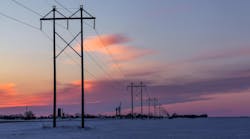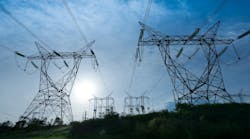Manitoba Hydro has released its expert Concepts Panel report, "Potential Use of Submarine or Underground Cables for Long Distance Electricity Transmission in Manitoba." The study was commissioned following publications by Professor John Ryan on the use of submarine cables in Lake Winnipeg and innovative methods for transporting long submarine cables to the lake.
The five-member expert panel investigated the future use of 500 kV AC and DC submarine and underground cable concepts for a potential transmission line extending from the lower Nelson River to the Winnipeg vicinity. The study found that with current cable technology and unproven cable transportation methods, a 500-kV AC submarine cable under Lake Winnipeg is not a viable option at this time.
The study focused on potential application for future north-south transmission in the post Bipole III context.
This study and report explored concepts and concluded that considerably more time and investment in detailed research and engineering is necessary to validate the concept of a submarine cable for Lake Winnipeg and to mitigate risks.
"We are pleased to have a better understanding of the potential application of these innovative ideas in the Manitoba context" said Bob Brennan, President and CEO of Manitoba Hydro.
"I would like to thank and acknowledge the Panel members' expertise and diligence in this challenging work and specifically to thank John Ryan, who put the idea of an underwater cable on the public agenda and who developed several concepts for transporting long lengths of cable by rail," said David Farlinger (P.Eng, F.E.I.C), Concept Panel chair.
For the sake of comparison, the report examined six illustrative routes. An overhead line was used to serve as the base reference case, while five others each employed a segment or segments of submarine or underground cable along with overhead lines, that were referred to as hybrid lines.
For purposes of this Panel's review, and for completeness, it was assumed that the fourth major transmission line from northern generation to southern load centers could be either DC or AC.
Some conclusions of the study include:
- With current cable technology and unproven cable transportation methods, a 500 kV AC submarine cable under Lake Winnipeg is not a viable option at this time.
- If the Manitoba Hydro system develops to accommodate a fourth Bipole of any mode (overhead or hybrid), and together with further research and technological advances, a 500 kV DC submarine or underground cable may be a viable option.
- Future transmission development should proceed on the basis of overhead, underground and submarine in that order of preference. Studies and circumstances at the time would determine the actual choice.
- Once all overhead and underground options have been exhausted, further research on long length cable transportation by train, related transportation handling and installation may be initiated.
- The life expectancy of an overhead line is approximately 100 years. Life expectancy for an underground or submarine cable is approximately 40 to 50 years.
- The repair time for underground cables is considerably less than for submarine cables. A spare cable for submarine and underground options would minimize forced outage times.
- Based on years of operating experience with long transmission lines in Manitoba, an overhead transmission line should have higher reliability than a hybrid line.
- Because the world's ocean going cable laying fleet does not have access to Lake Winnipeg, a suitably equipped cable laying barge, dock and cable handling facilities would need to be constructed at a Lake Winnipeg harbor.

